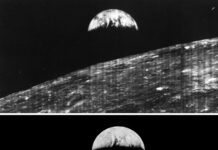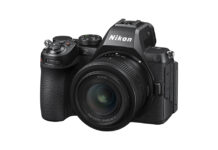NASA and Amentum Technicians Integrate SLS Rocket with Solid Rocket Boosters for Artemis II Mission
In a significant advancement for NASA’s Artemis program, technicians from NASA, in collaboration with the primary contractor Amentum, have successfully assembled the Space Launch System (SLS) rocket with its stacked solid rocket boosters. This critical integration took place at NASA’s Kennedy Space Center in Florida on March 23, 2025, marking a major milestone in the development of the Artemis II mission.
The Backbone of Space Exploration: The Core Stage
Central to this assembly is the core stage of the SLS rocket, which is the largest component and serves as the backbone of the entire launch system. Measuring an impressive 212 feet in height and weighing approximately 219,000 pounds with its engines, the core stage is designed to provide the structural support necessary for the other components of the rocket. This includes the launch vehicle stage adapter, interim cryogenic propulsion stage, Orion stage adapter, and the Orion spacecraft itself.
The core stage is crucial for the overall stability and functionality of the SLS rocket, ensuring that the various stages and the Orion spacecraft are securely connected and able to withstand the intense conditions of space travel. Its successful assembly with the solid rocket boosters is a testament to the technical prowess and meticulous planning involved in the Artemis program.
Artemis II: A Pioneering Crewed Test Flight
Artemis II holds the distinction of being the first crewed test flight as part of NASA’s ambitious Artemis campaign. This mission represents a pivotal step toward achieving human exploration of the lunar surface, with the ultimate goal of preparing for future manned missions to Mars. The Artemis program aims to establish a sustainable human presence on the Moon, fostering scientific discoveries and technological advancements that will pave the way for deeper space exploration.
The Artemis II mission will carry astronauts into space aboard the Orion spacecraft, testing the spacecraft’s systems and capabilities in a real-world environment. This mission will build upon the success of Artemis I, which was an uncrewed test flight designed to evaluate the performance of the SLS and Orion spacecraft.
Understanding the SLS Rocket
The Space Launch System (SLS) is NASA’s next-generation heavy-lift rocket, designed to carry astronauts and cargo beyond low Earth orbit. The SLS is a highly advanced and powerful rocket, capable of launching the Orion spacecraft to destinations such as the Moon and Mars. It features a combination of liquid hydrogen and liquid oxygen as propellants, powering its engines to generate the thrust needed for space travel.
The SLS is composed of several key components, including the core stage, solid rocket boosters, and an upper stage. The solid rocket boosters provide additional thrust during the initial phase of launch, helping the rocket overcome Earth’s gravitational pull. Once the boosters have expended their fuel, they are jettisoned, allowing the core stage to continue propelling the spacecraft into space.
The Orion Spacecraft: Designed for Deep Space Exploration
At the heart of the Artemis II mission is the Orion spacecraft, which is engineered to support astronauts on long-duration missions beyond low Earth orbit. Orion is equipped with state-of-the-art life support systems, advanced avionics, and a robust heat shield to protect the crew during re-entry into Earth’s atmosphere.
The spacecraft is designed to accommodate a crew of up to four astronauts, providing them with the necessary resources and environment to conduct scientific research and exploration activities during their mission. Orion’s versatility and resilience make it a critical element of NASA’s plans for deep space exploration, ensuring the safety and success of future crewed missions to the Moon and beyond.
Reactions and Implications for the Future
The successful integration of the SLS rocket with its solid rocket boosters for the Artemis II mission has garnered widespread attention and praise from the scientific community and space enthusiasts alike. This achievement underscores the collaborative efforts and dedication of NASA and its partners, marking a significant step forward in humanity’s quest to explore the cosmos.
As the Artemis program progresses, it continues to inspire a new generation of scientists, engineers, and explorers, eager to push the boundaries of human knowledge and capability. The insights gained from the Artemis missions will not only advance our understanding of the Moon but also serve as a crucial foundation for future explorations of Mars and other distant worlds.
The Artemis II mission is poised to demonstrate the viability of human space travel beyond low Earth orbit, setting the stage for more ambitious endeavors in the years to come. By fostering international partnerships and leveraging cutting-edge technology, NASA aims to lead the world in space exploration, unlocking new opportunities for scientific discovery and innovation.
In conclusion, the integration of the SLS rocket with its solid rocket boosters for the Artemis II mission represents a landmark achievement in NASA’s Artemis program. As the world eagerly anticipates the launch of this historic mission, the potential for groundbreaking discoveries and the advancement of human space exploration has never been greater. With each step forward, we move closer to realizing the dream of a sustainable human presence on the Moon and beyond, paving the way for a new era of exploration and understanding in the vast expanse of space.
For further information on the Artemis II mission and the ongoing developments in NASA’s Artemis program, readers can visit NASA’s official website at [nasa.gov](https://www.nasa.gov/mission/artemis-ii/).
For more Information, Refer to this article.

































